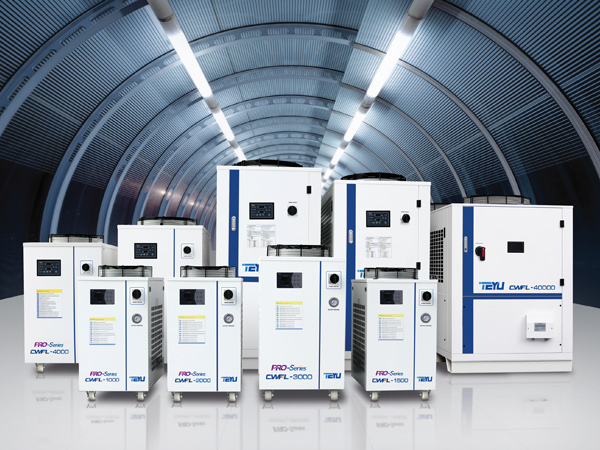Cost-effective fiber lasers have become the dominant heat source in metal 3D printing, offering advantages such as seamless integration, enhanced electro-optical conversion efficiency, and improved stability. TEYU CWFL fiber laser chiller is the perfect cooling solution for metal 3d printers, which features large cooling capacity, accurate temperature control, intelligent temperature control, various alarm protection devices, energy saving and environmental protection.
Fiber Laser Becomes the Main Heat Source of the 3D Printer | TEYU S&A Chiller
Metal 3D printing utilizing lasers has undergone significant advancements, employing CO2 lasers, YAG lasers, and fiber lasers. CO2 lasers, with their long wavelength and low metal absorption rate, required high kilowatt-level power in early metal printing. YAG lasers, operating at 1.06μm wavelength, outperformed CO2 lasers in effective power due to their high coupling efficiency and excellent processing capabilities. With the widespread adoption of cost-effective fiber lasers, they have become the dominant heat source in metal 3D printing, offering advantages such as seamless integration, enhanced electro-optical conversion efficiency, and improved stability.
The metal 3D printing process relies on laser-induced thermal effects to sequentially melt and shape metal powder layers, culminating in the final part. This process often involves printing numerous layers, resulting in extended printing times and demanding precise laser power stability. Laser beam quality and spot size are crucial factors affecting printing accuracy.
With notable advancements in power levels and reliability, fiber lasers now meet the requirements of various metal 3D printing applications. For instance, selective laser melting (SLM) typically necessitates fiber lasers with an average power ranging from 200W to 1000W. Continuous fiber lasers cover an extensive power range from 200W to 40000W, offering a wide array of options for metal 3D printing light sources.
TEYU Laser Chillers Ensure Optimal Cooling for Fiber Lasers 3D Printers
During the prolonged operation of fiber laser 3D printers, fiber laser generators generate high temperatures that can impact their performance. Hence, laser chillers circulate water to cool and control temperatures.
TEYU fiber laser chillers boast a dual temperature control system, effectively cooling the laser head of high temperature and the laser source of relatively low temperature compared to the laser head. With their dual-purpose functionality, they provide reliable cooling for fiber lasers ranging from 1000W to 60000W and keep the normal operation of fiber lasers for a long time. With large cooling capacity, accurate temperature control, intelligent temperature control, various alarm protection devices, energy saving and environmental protection, TEYU CWFL fiber laser chiller is the perfect cooling solution for metal 3d printers.

We're here for you when you need us.
Please complete the form to contact us, and we'll be happy to help you.










































































































